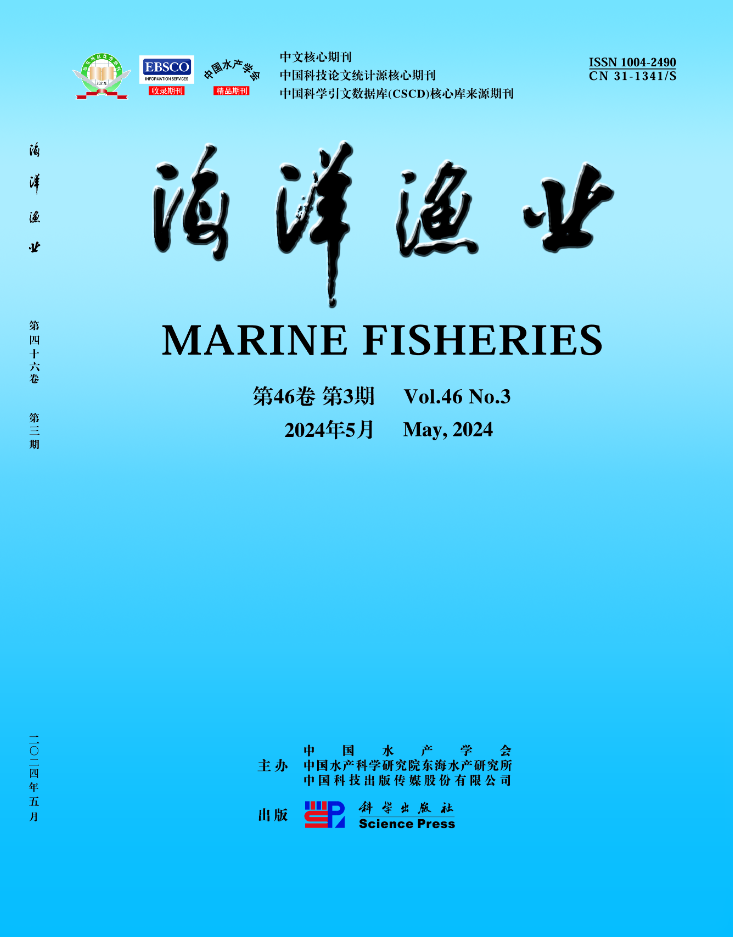螳螂虾捕捞和DISCARD渔业使用的是GILLNET渔具
引用次数: 2
摘要
丹戎Jabung Barat reggency具有巨大的螳螂虾资源潜力。这种商品价值很高,因为它的价格从143,600卢比到180,700卢比不等。每年的总捕获量为12.5万- 22.5万条,成为各国的出口商品之一。在Tanjung Jabung barat,螳螂虾是用网目10厘米的刺网捕获的。不幸的是,螳螂虾捕捞处理大量的副渔获物和弃物,这可能对可持续渔业资源产生负面影响。因此,本研究的目的是强调螳螂虾的可持续捕捞努力,并确定副渔获物和丢弃物的组成和比例。本署进行了一系列调查,收集在捕虾作业期间刺网捕获的虾种数目。结果表明,副渔获物和抛弃物分别占总渔获量的54.99%(7种)和22.69%(7种)。同时,螳螂虾的总捕获量为22.32%。关键词:副渔获物,弃物,刺网,螳螂虾本文章由计算机程序翻译,如有差异,请以英文原文为准。
STUDI HASIL TANGKAPAN BYCATCH DAN DISCARD PADA PERIKANAN UDANG MANTIS (Harpiosquilla raphidea) MENGGUNAKAN ALAT TANGKAP GILLNET
Tanjung Jabung Barat Regency has a great potential for mantis shrimp (Harpiosquilla raphidea) resources. This commodity is highly valued, as its price range from Rp. 143,600 to 180,700 for each individual. Annually, the total catches constitute 125,000-225,000 individuals, which become one of export commodities to various countries. In Tanjung Jabung barat, the mantis shrimp has been caught by using gillnet with mesh size of 10 cm. Unfortunately, mantis shrimp fishing deal with a significant number of bycatch and discards, which potentially have negative impact on sustainable fisheries resources. Therefore, the purposes of this study was to emphasis on sustainable fishing effort of mantis shrimp and identify the composition and proportion of bycatch and discards. A series of surveys was conducted for collecting the amount of species caught by gillnet during mantis shrimp fishing operation. The result shows that the bycatch and discards dominated the total catches making up to 54.99% (7 species) and 22.69% (7 species) respectively. Mean while, the total of fishing catches for mantis shrimp was 22.32%.Keywords: bycatch, discards, gillnet, mantis shrimp (Harpiosquilla raphidea)
求助全文
通过发布文献求助,成功后即可免费获取论文全文。
去求助
来源期刊
自引率
0.00%
发文量
4336
期刊介绍:
“Marine Fisheries”started publication in 1979, it mainly covers original research papers and reviews on basic theories and applications of aquaculture and fisheries, including marine biology, mariculture and reproduction, aquatic diseases and prevention, nutrition and feed of aquatic organisms, fishery ecology and environmental protection, development and conservation of marine fishery resources, fishing tools and methods, preservation and comprehensive utilization of aquatic products, fishery machinery and instruments.

 求助内容:
求助内容: 应助结果提醒方式:
应助结果提醒方式:


